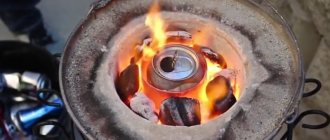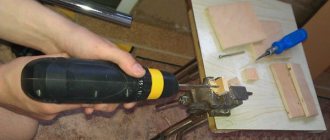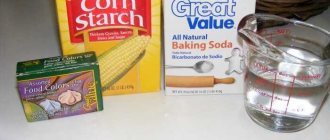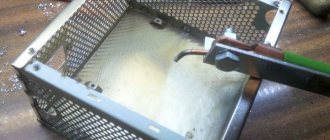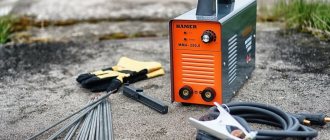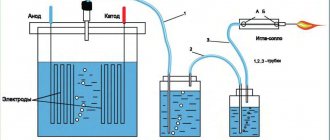Application of aluminum
The widespread use of aluminum products lies primarily in the fact that it is a light metal. Aluminum is widely used in electrical engineering because it has excellent electrical conductivity.
For household needs, pots, cans, colanders, and mugs are made from this metal. Pure aluminum is used to produce foil used for electrolytic capacitors. It can also be used in the production of radiators.
However, soldering this metal can cause a lot of problems. This is explained by the fact that upon slight interaction with air, the surface of aluminum is covered with a thin but hard oxide film. It protects aluminum from further oxidation, but during the soldering process it creates a difficult barrier to overcome.
There are several methods to solve this problem, for example, soldering with rosin, but the best results are obtained by using fluxes specially designed for this.
Soldering problems
The melting point of aluminum does not exceed 660 degrees. The consequence of this is the use, for economic reasons, of welding machines that do not have too much power.
However, there is an oxide film on the surface of aluminum that must be removed before starting the welding process. But to melt it requires heating to a temperature of 2000 degrees. When this value is reached, not only the oxide film will be destroyed, but also the metal itself, which will lead to a deterioration in the quality of the welded joint. In addition, the oxide film can be restored after it has melted. Due to the stability of the oxide film, which has weak adhesion to solder, conventional solder has difficulty sticking to the surface of the part.
Aluminum soldering flux solves this problem. When applied to the welding area, it will block the passage of air into this area, which will lead to a weakening of the negative effects of the oxide film. Compared to other metals, such as iron and zinc, aluminum is more active - a cleaned part can instantly become covered again with an oxide film. Therefore, flux intended for aluminum parts is also required to act quickly.
Active flux for low-temperature soldering of aluminum will quickly dissolve the oxide film on the surface of products that interferes with the normal spreading of solder. In addition, zinc is added to the solder intended for joining aluminum products, which has the ability to dissolve well in aluminum.
A connection based on solder containing zinc has greater strength. By combining the appropriate solder and a universal flux for soldering aluminum, you can obtain a high-quality connection without much difficulty.
Welding aluminum at home with an inverter
28.02.2016
Welding aluminum is not an easy process. This metal is classified as difficult to weld. Specialists with experience in working with steel blanks should acquire certain skills before joining parts made of winged metal. Professional aluminum welding.
Difficulties encountered when working on aluminum alloys
- Aluminum is a fluid metal. In its molten state it is difficult to control. Its behavior becomes especially unpredictable when overheated. The melt can easily destroy the bottom layer of solid metal and flow out through a crack. By analogy with cast iron, novice welders are recommended to use gaskets made of refractory steel or ceramics. When heated, winged metal does not change color, so it is difficult to control visually;
- The biggest problem is the high oxidability of aluminum. In open air, metal molecules form, together with oxygen, a dense oxide film on the surface. Aluminum oxide has unique properties - it is stronger than the metal itself and is refractory. The melting point is much higher than permissible when working with aluminum. In addition, the oxide film is a good dielectric, which prevents arc ignition. Before welding, parts must be thoroughly cleaned, and during work, an inert gas must be used to prevent the access of oxygen;
- Aluminum has a very high coefficient of linear expansion. With strong heating, the welding zone puts pressure on the surrounding mass. Since the metal is brittle and has low elasticity, cracks may appear in the boundary zones and deformation of flat surfaces. Aluminum welding - the difference between amateur and professional welds. On the left is a high-quality seam. On the right - defective. To protect against this phenomenon, the welding temperature must be carefully controlled. If this cannot be done, the workpiece is preheated to 200° - 250°C;
- Aluminum alloys contain hydrogen. When heated, it actively releases and forms pores in the melt. This reduces the strength of the seam. The compounds may also contain silicon. It forms small cracks;
- The thermal conductivity of aluminum is almost the same as that of copper. The thermal energy from the arc is absorbed by the material and dissipated into the mass. Therefore, the welding machine must have a current reserve;
- When the molten seam hardens, so-called hot cracks form in its body. This is a feature of the structure of the metal - it seems to crystallize, turning into the solid phase. Therefore, it is necessary to add special additives when welding, especially if the seams are located too close to each other;
- Aluminum alloys differ from each other in material properties. This must be taken into account when selecting welding equipment.
IMPORTANT! When welding, the metal may catch fire. It is unacceptable to extinguish it with water. It is necessary to have a carbon dioxide fire extinguisher in the work area.
Preparing the surface for work
Removing oxides by usual cleaning will not help. The film immediately re-forms in air. The sequence of actions is as follows:
- Preliminary cleaning is carried out with any detergent and a stiff brush. Preferably gasoline;
- Rinse with clean cold water;
- The surface is degreased with organic solvents: acetone, white spirit, or building compounds “RS-1”, “RS-2”;
- If the part size is small, you can immerse it for several minutes in an alkaline bath, at a solution temperature above 60°C;
- Then the surface is cleaned (actually sanded) with a wire brush. The use of emery or an abrasive wheel is not allowed, since particles of the working layer will remain on the metal;
- The sanded surface is immediately washed with solvent, which should dry on its own. IMPORTANT! It is unacceptable to wipe the surface with a rag or touch it with your fingers;
- After preparation, welding work begins immediately.
Recipe for preparing an alkaline solution for immersing an aluminum workpiece: For a liter of water (preferably distilled), take two tablespoons of soda ash, two tablespoons of technical tri-sodium phosphate and one spoon of liquid glass. Mix the components thoroughly and immerse the workpiece in the solution.
Aluminum electrode welding
Rods for welding winged metal can be either consumable or non-consumable. The first option is made of aluminum wire. Coated piece electrodes differ in the composition of their additives. Electrodes for aluminum welding
- Brand "OK". Designed for joining aluminum alloys with magnesium or manganese. Alkali-salt coating is very hygroscopic, so the electrodes must be stored in airtight packaging. Open immediately before use;
- Popular series “OZANA-1” and “OZANA-2”. In the first case, aluminum grades A0, A1, A2 and A3 are welded. They work well in surfacing mode, the layer of which is formed from a rod. The second option is intended for blanks AL-4, AL-9, AL-11. Electrodes of this series can be used to weld even vertical seams, despite the fluidity of the metal;
- The OZA brand is made of SVA wire with a diameter of 1 to 10 mm. Gives excellent results when welding pure aluminum of any thickness; only the diameter of the electrode is selected. The only rods that can qualitatively connect silicon containing alloys;
- "UANA." These electrodes are used to cook massive products, usually castings. If the workpiece is prone to temperature deformation, this is your choice;
- “EVCH”, “VL” series, as well as imported analogues WL-20, WC-20. Tungsten non-consumable rods;
Tungsten electrodes for TIG welding of aluminum. They operate in neutral gases, such as a helium-argon mixture. It is not easy to ignite the arc during such welding, so a switchable oscillator is used to start.
- Filler rod. It is used when welding with a tungsten non-consumable electrode. A weld is formed from it.
Welding aluminum using a filler rod
Recipe for making electrodes for aluminum
The most popular home welding job is repairing cracked aluminum engine parts. For this work, expensive electrodes of the UANA series are used. You can make similar consumables yourself.
We cut aluminum wire (diameter 3-4 mm) into pieces of 25 cm. Prepare the coating: mix crushed chalk in silicate glue until a paste forms. We cover the rods with a layer of 2 mm and let them dry. It is recommended to prepare more consumables - they burn out very quickly.
Working as an inverter
All these electrodes are used with a conventional welding inverter. With good surface preparation (see instructions above), work can be done in normal air. The electrode coating acts as a generator of inert gas.
IMPORTANT! When using piece electrodes on aluminum, caustic fumes are released. Welding must be done in a well-ventilated area. Welding aluminum in production.
The seam is not perfect, but quite reliable.
If it is not possible to supply an argon mixture to the welding zone, special flux powders are used, which you can prepare yourself or buy at a building materials store; their price is low.
The most common inverter used for aluminum welding is used. The arc is ignited with reverse polarity; in the absence of an oscillator, a starting current of 200-250 amperes is supplied, which must be adjusted during the process.
The most common inverter used for aluminum welding is used. The arc is ignited with reverse polarity; in the absence of an oscillator, a starting current of 200-250 amperes is supplied, which must be adjusted during the process.
For this you will need an assistant. Move the electrode away from you at a speed of no more than 40 mm per second. Upon completion of aluminum welding, the rod should be smoothly removed from the seam. If you do this abruptly, a crater will form.
Still, it is better to find a way to supply an argon mixture to the welding zone. Buying a cylinder and filling it with argon is not that expensive. But the quality of the seam will be perfect.
This video describes in detail how to weld aluminum in an argon environment using a TR 220 inverter. It also explains how to properly set up the machine and what to pay attention to when welding.
Aluminum welding - lessons for a novice welder
Welding aluminum at home with an inverter Link to the main publication
obinstrumente.ru
Features of the substance
Active flux for soldering aluminum has significant differences from similar substances used to join products made of steel, brass and copper, just as the properties of these metals themselves differ. The flux composition contains substances that can easily dissolve the oxide film on the surface of aluminum. For soldering aluminum products, fluxes of various numbers are used.
The simplest are fluxes No. 8 and 9, however, their activity is not too great compared to those that include fluorine compounds. The choice is made based on the characteristics of a particular job. There are fluxes that are used for welding joints of parts without prior preparation. The most common type of flux is F-64.
The composition of the flux for aluminum soldering, number F-64, contributes to its increased activity, which makes it possible to successfully clean even uncleaned surfaces from the oxide film. The solution is colorless or light yellow.
How to solder?
Before proceeding with direct soldering, it is necessary to properly prepare the surface of the wires. First, the surface must be degreased. This is achieved by treating the soldering area with acetone, gasoline or another type of solvent.
If there is no flux on hand, it is necessary to mechanically remove the oxide film from the surface of the wire. This is done using sandpaper, a steel brush, etching fluid, and so on.
It must be remembered that it will not be possible to remove the abrasive film by mechanical means, since a new, albeit thinner, oxide film immediately forms on the metal surface due to contact with air. Flux is much better in this regard, as it removes all the oxide film and prevents air from penetrating the metal.
When the oxide is removed, the wires are fixed, heated with a soldering iron and solder is applied to the heated area.
Solders used
When welding products made of aluminum, it is recommended to use solders from the tin-lead group. The highest quality connection can be obtained if you use a type of solder that contains elements such as silicon, zinc, and copper. The addition of additives significantly improves the quality of the solder - they lower its melting point, increase wettability, and make it more durable.
These types of solders are produced by domestic industry and foreign manufacturers. Tin-lead solders have the lowest melting point. One of the most common brands of solder for aluminum welding is HTS-2000. Experienced welders say that HTS-2000 solder should only be used with flux to obtain a high-quality connection.
Good substances in this area also include solder from the French company Castolin 192FBK, as well as Castolin 1827 solder, used when joining parts made of aluminum and copper. The domestic analogue of HTS-2000 is SUPER A+ solder, manufactured in Novosibirsk, which is used in conjunction with SUPER FA flux.
Electrode selection
When choosing conductive rods for welding aluminum, you need to pay attention to the following aspects:
- The composition of the electrode must correspond to the alloy of the elements being connected. Information about the first is indicated by the manufacturer on the packaging and certificate.
- The thickness of the consumable material should not exceed the thickness of the workpiece by more than 1 mm. Violating the rule will result in burning through the element.
- Welding rods dried more than once reduce the strength of the resulting bead. Welding is performed with carbon, graphite or tungsten electrodes, which is determined by the method of operation.
Flux F-61
An option such as F-61 flux is worthy of special attention. It refers to a type of active flux for removing oxides from the surface of aluminum products intended for soldering. At the same time, it improves the spreading process of liquid solder. Flux F-61A can also be used when joining aluminum and aluminum-based alloys with copper and steel products. What sets it apart from the entire group of similar elements is that it is made on the basis of fluoroborates.
Flux F-61A produced by REXANT is a low-temperature flux. It is used when soldering aluminum using solders belonging to the tin-lead group. The temperature regime is in the range of 150-320 degrees.
F-61A flux has the following composition:
- triethanolamine - 82 percent;
- zinc fluoroborate - 10 percent;
- ammonium fluoroborate - 8 percent.
The flux is packaged in dark glass bottles containing 30 milliliters of substance each. The dimensions of the bottle are on average 35x20 with a height of 76 millimeters. The weight of the bottle is about 0.03 kilograms. For ease of use, the bottle is equipped with a dropper, which makes it possible to use the flux in doses.
The flux complies with the requirements of the regulatory document OST 4 GO.033.200. Its price is affordable. Flux F-61A is supplied with instructions for use, which must be carefully studied before use. In particular, it specifies safety precautions during welding.
If flux gets on the welder’s skin, you should immediately wash the area with soapy water and wipe dry with a clean cloth. Bottles with flux must be stored in such a way that they cannot fall into the hands of children. The guaranteed shelf life is one year. After the process is completed, the remaining flux is removed using a cloth moistened with water or alcohol.
DIY electrodes for aluminum
Are you interested in what aluminum electrodes exist for electric arc welding and shielding gases? Let's talk about industrial and homemade rods!
What electrodes are used to weld aluminum?
Melt coated rods:
- OZANA-1 and OZANA-2;
- OZA-1 - OZA-2;
- UANA;
- Capilla ALU 60/12 Si;
- Aluminil Si 12;
- EAL 4047;
- ALUMIN-351N;
- ZELLER 480;
- OZR - OZR-2 is best used for cutting metal.
1) OZANA-1, OZA-1, ESAB 96.10 are used for surfacing and welding of pure aluminum alloys with preheating of the metal. The process occurs on a direct current of reverse polarity. The seam is corrosion resistant.
2) OZANA-2, OZA-2, ESAB 96.50 weld silicon alloys (silumin), AL4, AL9, AL11, suitable for casting. Direct current of reverse polarity. The rods need to be calcined, and the metal needs to be heated.
3) UANA (salt coating) for aluminum casting alloys AD00, AD0, AD1, AD, AMts.
UANA operating modes
4) Capilla ALU 60/12 Si special coating for joining aluminum-silicon alloys (Al-Si, Al-Mg-Si, Al-Si-Mg-Cu). Price 2,350 rubles per 2 kg package, rod diameter 2.5 mm.
Capilla ALU 60/12 Si
5) Electrodes for aluminum Aluminil Si 12 with a special white coating for joining parts where color matching is required.
They repair pipes, windows, furniture, and car parts. Cast alloys with Si content up to 12% - AlSi 12 (Cu), AlSi 10 Mg (Cu), AlSi 6 Cu 4.
Metal thicker than 15 mm is heated before welding from 150 °C to 250 °C.
Characteristics of Aluminil Si 12
6) EAL 4047 for joining aluminum alloys:
- Al Si 12 (aluminium-silicon);
- Al Si 12 (Cu);
- Al Si 10 Mg (aluminium-magnesium-silicon);
- Al Si 10 Mg (Cu);
- Al Si 6 Cu 4.
EAL 4047
7) ALUMIN-351N for the restoration of turbines, drifts, covers, pistons, pipes with a thickness of more than 2 mm. Weldable materials:
- Al Si 5 Mg (3.2341);
- Al Si 10 Mg (3.2381);
- Al Si 10 Mg (Cu) (3.2381);
- Al Si 12 (3.2581);
- Al Si 12 (Cu) (3.2583);
- Al Si 11;
- Al Si 9 Mg;
- Al Si 9 Cu 3;
- Al Si 7 Mg;
- Al Si 6 Cu 4.
ALUMIN-351N
ZELLER 480 with improved coating for electric arc welding and surfacing of aluminum, silumin, duralumin. Used to eliminate casting defects and repair engine blocks, crankcases, etc.
9) OZR-1 and OZR-2 for cutting at high speeds with the rod tilted in the opposite direction. The electrode movements are reciprocating: top-down or forward-backward. Calcination of products for 1 hour, at a temperature of 170 degrees.
Aluminum electrodes quickly absorb moisture; it is better to store them in dry places.
Tungsten electrodes for aluminum welding (non-consumable):
- WP with green tip;
- WZ-8 with white markings;
- WL-15 (golden color);
- WL-20 (blue marking),
grades and sharpening of tungsten electrodes and welding of aluminum with argon.
For semi-automatic machines, wire MAL 4047, ER 4043, ER 5183, ER 5356 is used.
The price for the rods described above is decent and homemade “kulibins” make homemade electrodes for aluminum welding. At home, making rods with your own hands is not difficult. The recipe is simple:
- take aluminum wire 3-4 mm, cut into pieces 300-350 mm, sand;
- grind the chalk, combine with liquid glass (silicate glue), mix to a paste;
- Apply the mixture to the prepared pieces with a layer of 2 mm and dry.
The wire is immersed vertically in the coating solution, leaving a clean end 30 mm long. Homemade rods are hung to dry.
How to weld aluminum with an electrode
Aluminum alloys have different weldability due to the presence of alloying elements of different concentrations in them. The table will help you identify easy and difficult to weld groups of materials.
When the metal thickness is more than 5 mm, welding of aluminum with an electrode is performed with cutting of the edges.
The V-shaped groove is made with a bevel of 45-60 degrees, and the technological gap between the workpieces is 1-2.
5 mm, based on the thickness of the elements being welded.
Products subjected to welding need to be dried (insurance against weld porosity), and the electrodes need to be calcined according to the manufacturer’s instructions.
The prepared edges are degreased with acetone or solvent.
Electric welding of aluminum with an electrode is performed at a right angle (without tilting the rod), with a short arc.
For thick metal, the joint is heated to a temperature of 150-200 degrees.
The technology is performed by an inverter using direct current of reverse polarity (positive pole on the electrode, negative on the part).
Required welding accessories:
- power source for manual arc welding;
- metal brush for cleaning the oxide film;
- hammer for removing slag crust;
- welding brush;
- electrodes;
- leggings.
If anyone does not have any of the equipment described, then hurry to the store to buy it.
Process description
Let's take, for example, a material with a thickness of 10 mm. We cut the edges at an angle of 45 degrees. Use a gas burner to dry and heat the edges of the parts, having previously degreased them.
We heat the product with gas to 200 degrees
Using clamping devices, install the plates with a gap of 1 mm and remove the oxide film with a brush.
An abrasive tool cannot be used; abrasive particles will enter the viscous layer of the aluminum alloy and cause weld defects.
After stripping, we perform welding with a dry electrode with a diameter of 3 mm. After each pass, remove the slag with a hammer. Slag connections are not allowed.
If the technological recommendations are followed, a strong connection is obtained.
:
PS We got acquainted with the brands of aluminum electrodes and connection technology.
(15,00
Source: https://steelfactoryrus.com/samodelnye-elektrody-po-alyuminiyu-svoimi-rukami/
Self-production
It is possible to make flux for soldering aluminum with your own hands. Substances that have good solubility and antioxidant properties are suitable for production. When preparing flux for aluminum with your own hands, alcohol, acids, and oils are used as a basis.
The simplest flux can be prepared by dissolving a tablet of acetylsalicylic acid, best known as aspirin, in water. The tablet should be dissolved until the sediment disappears. You can also use citric acid granules.
A good flux can be obtained by dissolving rosin in ethyl alcohol. Since it dissolves slowly, it should be crushed as thoroughly as possible. To complete dissolution, the solution should be left for some time. This process can be accelerated by placing the solution in a glass jar and heating it in a water bath to a temperature of 80 degrees.
The advantage of flux obtained from rosin dissolved in alcohol is its neutrality, which allows its residues not to be washed off after the soldering process is completed. It is allowed to dissolve not in ethyl alcohol, but in glycerin. This flux will be thicker and more convenient to use.
